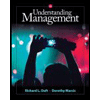Your memo should include a beginning, middle and end. The beginning section of the memo should serve as an opening summary of the contents of your memo. It should be clear and concise and lay out the goal of the analysis that is presented in the memo. The main purpose of the opening is to allow the manager, in this case Mrs. Walker, to make a quick scan and determine the subject of the memo. The middle section of the memo should describe the current situation, the data used in the analysis, the method of analysis, the model used to analyze the questions and the results that were found. The discussion of the current situation should be brief, providing a context for the analysis, but not rehashing a lot of the information that the audience for the memo would already know. (For example, in the case you do not need to include the entire history of the business.) In describing the data, you should indicate which data you used and why you used it (and why you did not use some of the data), and where you obtained the data. The description of the analytical method used should discuss, in lay terms, what the method does and why it is appropriate for the current analysis. In discussing your analysis you should indicate any assumptions you made and why you made them. The middle section of the memo will probably consist of several paragraphs in order to clearly and systematically present your work. This section should also make clear references to your attachments so that the reader knows where to look to view your calculations. In the final section of the memo you will need to interpret the results of your analysis and provide a recommendation based on your analysis. In providing your recommendation, you should also indicate any shortcomings of the analysis and the benefits and risks, quantitative and qualitative, associated with implementing your recommendation. You should also identify alternative or additional courses of action the reader might take based on your evaluation of the results.
Your memo should include a beginning, middle and end. The beginning section of the memo should serve as an opening summary of the contents of your memo. It should be clear and concise and lay out the goal of the analysis that is presented in the memo. The main purpose of the opening is to allow the manager, in this case Mrs. Walker, to make a quick scan and determine the subject of the memo.
The middle section of the memo should describe the current situation, the data used in the analysis, the method of analysis, the model used to analyze the questions and the results that were found. The discussion of the current situation should be brief, providing a context for the analysis, but not rehashing a lot of the information that the audience for the memo would already know. (For example, in the case you do not need to include the entire history of the business.) In describing the data, you should indicate which data you used and why you used it (and why you did not use some of the data), and where you obtained the data. The description of the analytical method used should discuss, in lay terms, what the method does and why it is appropriate for the current analysis. In discussing your analysis you should indicate any assumptions you made and why you made them. The middle section of the memo will probably consist of several paragraphs in order to clearly and systematically present your work. This section should also make clear references to your attachments so that the reader knows where to look to view your calculations.
In the final section of the memo you will need to interpret the results of your analysis and provide a recommendation based on your analysis. In providing your recommendation, you should also indicate any shortcomings of the analysis and the benefits and risks, quantitative and qualitative, associated with implementing your recommendation. You should also identify alternative or additional courses of action the reader might take based on your evaluation of the results.
Step by step
Solved in 2 steps


